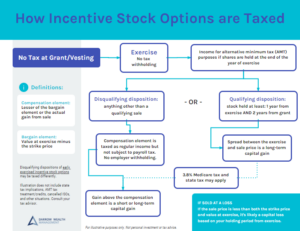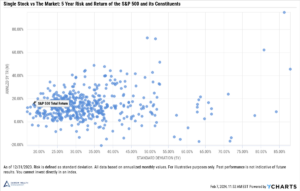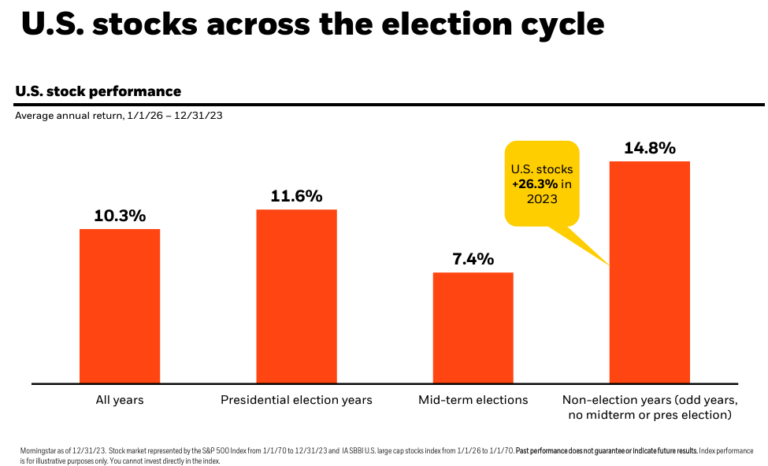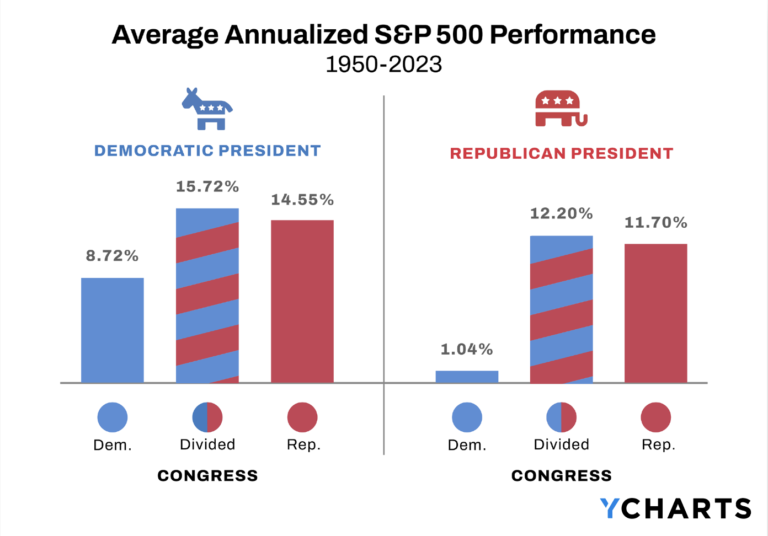What does an IPO mean for employees? And what should you do when your company is about to go public? For early-stage employees and executives with stock, a company going public can potentially be life-changing. For workers hired closer to the IPO, there’s still potential for some type of windfall. If you don’t have stock options or equity awards at all, going public will likely just be business as usual. For employees with stock, here’s what to do when your company goes public.
What does an IPO mean for employees with stock who joined when the company was a startup?
An IPO provides liquidity for the company. It’s also an exit strategy for founders/investors and a way for employees to sell stock too. It’s much harder for employees of private companies to sell their shares and it’s not always possible.
Working for a company before it goes public can be highly beneficial for employees who have stock options or RSUs after a successful IPO. When employees are given stock options at an early-stage startup, they usually have the right to buy shares at a very low valuation. How low? Often, less than $1.
If you still work for the company, or if you’ve left and exercised your options (or retain the right to), then an IPO at almost any price is likely to bring a considerable windfall.
Here’s a simple example:
- Lifetime options granted: 200,000
- Average strike price: $1.15
- Total cost to buy options: $230,000
- IPO price: $20
- Potential pre-tax proceeds: $3,770,000
Whether you’re a one-time or serial startup employee, there’s a serious potential for net wealth accumulation. Of course, there are many other variables at play which will help determine what an IPO might mean for you financially. Factors such as taxes, how long you own the stock, post-IPO performance, etc., will all play a role. More on this to follow below.
Have stock options? Tips on what to do when your company goes public
If you work for a company that has gone public (or is about to), or if you own stock from a previous employer in the same situation, you likely have questions about what to do with your shares or what happens to stock options after an IPO. Here are some of the things to consider when your company moves from the private market to the public one.
Get organized!
Download and review your stock plan documents and grant agreements. Understand what type(s) of equity compensation you have, the tax treatment, key dates, strike price(s), vesting status, and so forth. Getting a team of advisors (financial, tax, estate) together to assist you is highly recommended if you’re expecting life-changing sudden wealth.
Find out when you can sell
If you’re a current employee, the company has likely communicated with employees (in clear terms) about the lockup period, should one apply (as is common). If you’re a former employee, this may be a bit harder. In a typical IPO, the underwriter may require that the lockup extends to former employees.
The company may send you a letter or you may need to reach out and/or sift through SEC filings. In SPAC deals, the business combination agreement will have details about the lockup, but again, you’ll need to figure out what applies to you. Lockups can vary: sometimes it’s a stated number of days, event based (such as reaching a target share price or an earnings release), a combination of the two, or a multi-stage release. The terms of the lockup can also change before or after the company goes public!
Plan for change
The IPO may not go as planned. It may not ‘go’ at all. Or perhaps it’s wildly successful. Mentally prepare yourself for a rollercoaster. Focus on what you can control. Understand your liquidity needs for other goals and taxes. And be very careful not to pre-spend the proceeds. Bottom line: it’s a highly nuanced situation when a company goes public. Seriously consider working with advisors who have experience in the space.
Developing your exercise strategy
If you have incentive stock options or non-qualified stock options, exercising your stock options in advance can create tax savings down the line. ISOs qualify for favorable long-term capital gains tax treatment if held for at least 2 years from the grant date and 1 year from the exercise date. Non-qualified stock options are taxed at exercise and any subsequent gain can qualify for long-term capital gains if held for 1 year after exercise. Here’s more on how stock options are taxed.
When Should You Exercise Stock Options?
Strategic tax and financial planning is advisable when deciding how and when to exercise your stock options
You’ll need to consider several trade-offs and considerations:
- If you have incentive stock options, exercising may trigger the alternative minimum tax. If so you’ll need cash to pay the AMT if you can’t sell your shares. You’ll also need funds to buy the shares at exercise. Consider the pros and cons of a net or cashless exercise after the company goes public.
- If you have non-qualified stock options, consider the cash flow implications. Weigh the pros and cons of paying for the stock out of pocket versus a cashless or net exercise after the IPO. And be aware that at exercise, your employer should withhold a portion of pay for taxes (either 22% or 37% until 2026 when set to increase), which will impact your cash flow.
- Due to the tax treatment of stock options, exercising early can provide big tax savings down the road. When you exercise and hold stock options, there are risks. If the post-IPO stock price sinks below your strike price, you’re underwater. This risk becomes greater for employees who receive grants closer to the IPO as the valuation of the company should be much closer to the target IPO price than early-stage employees.
- Also realize that while an IPO may seem imminent, things can always change. WeWork was on the cusp of a massive initial public offering in 2019 before it was suddenly halted. WeWork went public via SPAC merger in October 2021, though the valuation was significantly less.
- In some situations, it may not make sense to exercise your options until after the IPO and lockup. That way, there’s no risk of becoming underwater or losing the public market for your shares, as you can simultaneously exercise and sell the options at once. It can also help you avoid having already exercised shares go underwater during a lockup.
Before the IPO, get your advisory team together. Consider working with a financial advisor and CPA to develop an exercise strategy that’s aligned with your entire financial situation. You’ll need to have the right team in place post-IPO to manage your shares from a diversification, risk, and tax perspective as well.
5 Stock Option Mistakes People Make During an IPO
Deciding when to sell and take profits
When thinking about selling your stock after the IPO, your first thought might be fear of missing out (FOMO) on future growth. Instead, try to reframe the decision to taking profits in an effort to reduce risk.
Employees of pre-IPO or newly minted public companies are often very bullish on the prospects of their employer. But it’s important not to let emotional attachment cloud investment judgement. Shareholders of publicly traded companies might not be as forgiving if profit goals are missed.
When considering whether to hold or sell your stock after the lockup period, it’s important to try and strike a balance between turning paper profits into realized gains and participating in possible future upside. If you were given a cash bonus, would you use it to buy more company stock?
What to do with stock options after an IPO also requires financial and tax planning
Some trade-offs and considerations:
- Don’t let the tax tail wag the dog. The best way to minimize your tax liability is to have no gains at all. But doesn’t that defeat the purpose? Sometimes paying more in tax is necessary to ensure you can lock in gains. A lot can happen in a year. And who says tax rates won’t increase in the future?
- What percent of your overall investment assets are tied up in the stock? In general, if more than 10% of your wealth is in any one asset, it’s a concentrated position. In contrast, diversification can reduce risk on several levels.
- Be realistic about risk – stocks don’t only go up. Particularly for volatile industries like biotech and pharma, stock prices can fluctuate significantly. More on that below.
How have IPOs performed?
Professor Jay Ritter from the University of Florida is perhaps the preeminent expert in IPO data and trends. His research showed that between 1980 and 2019 IPOs have underperformed other firms of the same size (market cap) by an average of 2.4% per year during the five years after issuing, not including the first-day return which can be significant (18% on average according to Ritter).
His research also shows average returns over the first six months generally outperformed similarly-sized firms by 1.2%, while performance during months 6-12 typically underperformed by -4.6%. And returns in the first and second years after going public lagged by -3.4% and -7.2%, respectively.
To be clear: IPOs can be wildly successful. But we make the points above because employees with stock tend to be overly bullish about the prospects of their employer. In financial planning and investing, the best strategies tend to be in the middle. Put another way, it’s not an all-or-nothing when considering whether to sell shares after the lockup expires. Often, the best strategy is to develop a plan to diversify over a set time period. Think of it like dollar-cost averaging in reverse.
Financial planning after an IPO
For many of us, our lifestyle goals are not in short supply. The challenge then becomes prioritizing wants and needs to arrive at the best plan for you. Without developing a comprehensive financial model, it is very difficult to accurately evaluate multiple scenarios (early retirement, perhaps?), trade-offs, and opportunity costs over the long term.
When we develop a financial plan for our clients, we combine all the pieces of their financial and life situation to create one cohesive view. Using income, expenses, tax law, and goals, we are able to project clients’ cash flows and analyze financial possibilities over time. This includes stress testing financial plans to account for investment risk.
What’s your plan for the proceeds? Windfalls don’t happen every day, so it’s important not to pre-spend your anticipated proceeds or miss the opportunity to supercharge your retirement savings. Beware of the trappings of lifestyle inflation!
Don’t choose the do-nothing strategy. We can’t be experts at everything, and that’s ok. Don’t shy away from making a decision if you’re unsure of how to manage your stock; engage a professional to help.
Nationally Recognized Wealth Advisor in Stock Compensation
Selection of media appearances by Kristin McKenna CFP®, President of Darrow Wealth Management and a nationally recognized specialist in employee stock options and equity compensation.
Publications above reflect media organizations that have quoted and/or published articles authored by Kristin McKenna and should not be misconstrued as a current or past endorsement of Kristin McKenna, Darrow Wealth Management, or any of its advisors. Please refer to the media page for more information and links to published works.
Disclosures
All indexes are unmanaged and an individual cannot invest directly in an index. Index returns do not include fees or expenses. Examples in this article are generic, hypothetical and for illustration purposes only. Past performance is not a reliable indicator of current and future results. This is a general communication for informational and educational purposes only and not to be misinterpreted as personalized advice or a recommendation for any specific investment product, strategy, or financial decision. This material does not contain sufficient information to support an investment decision and it should not be relied upon by you in evaluating the merits of investing in any securities or products. If you have questions about your personal financial situation, consider speaking with a financial advisor.














